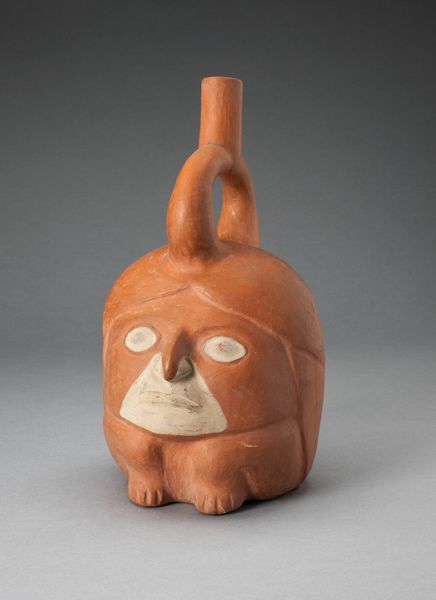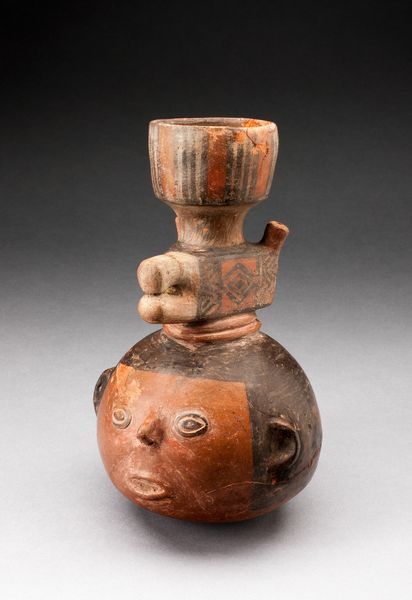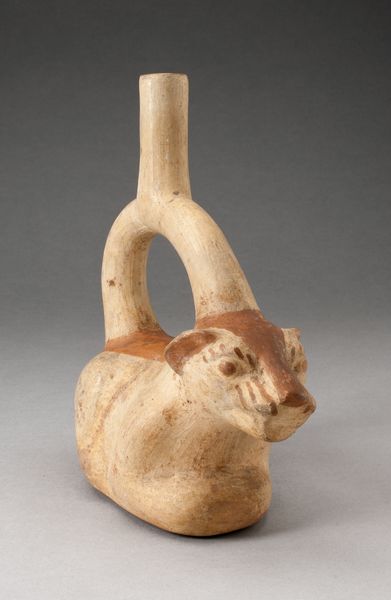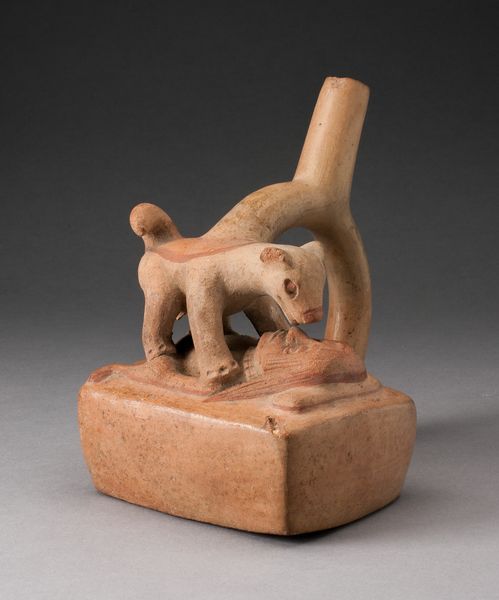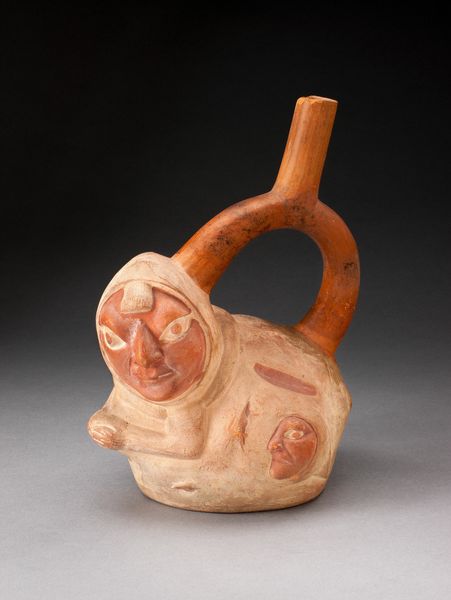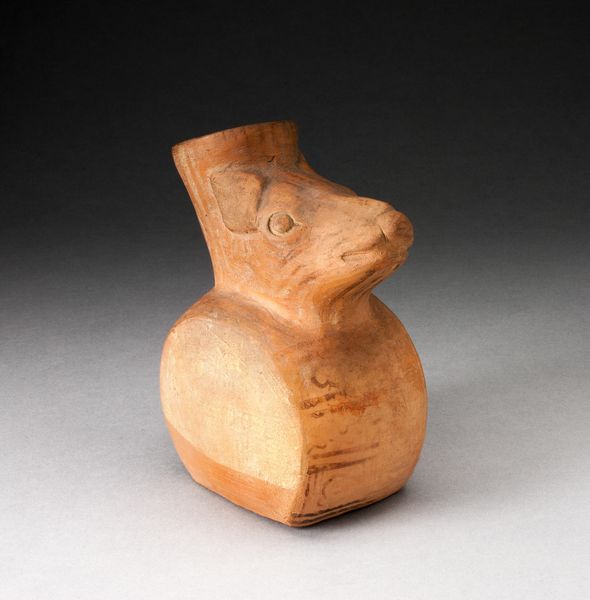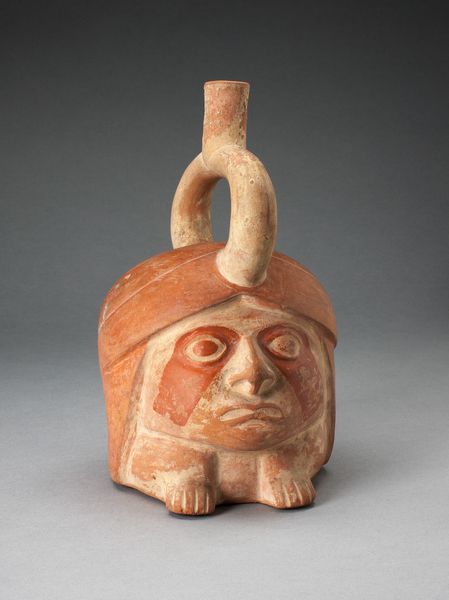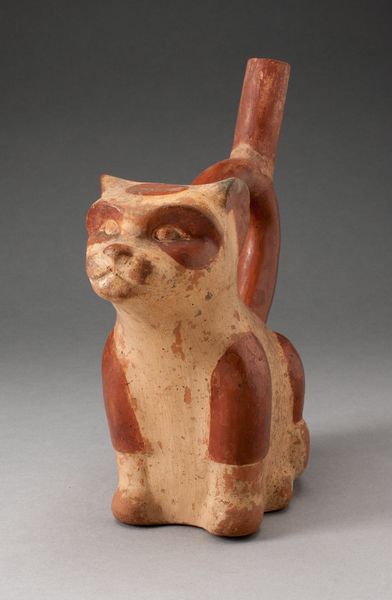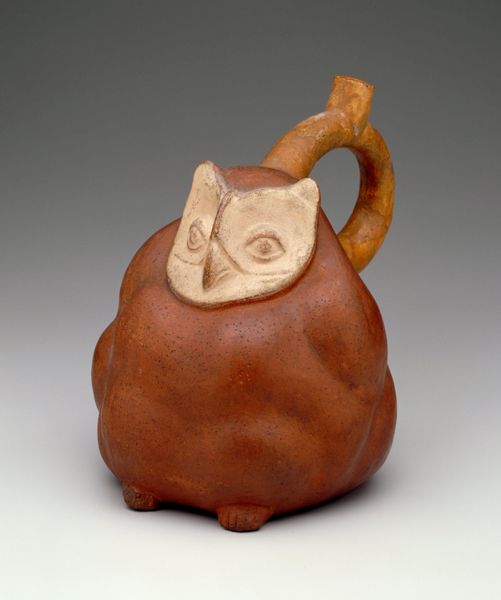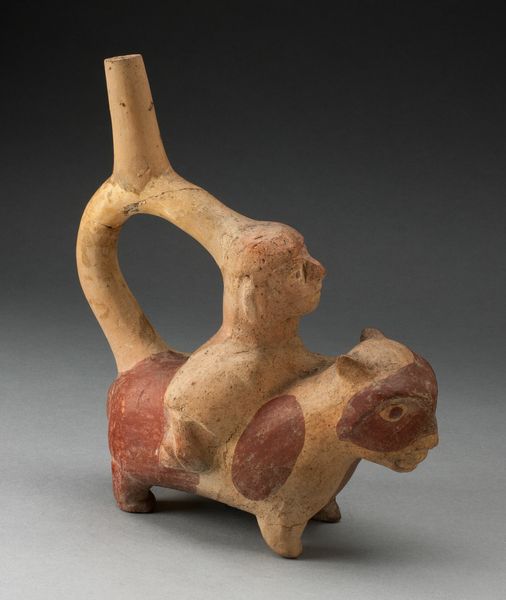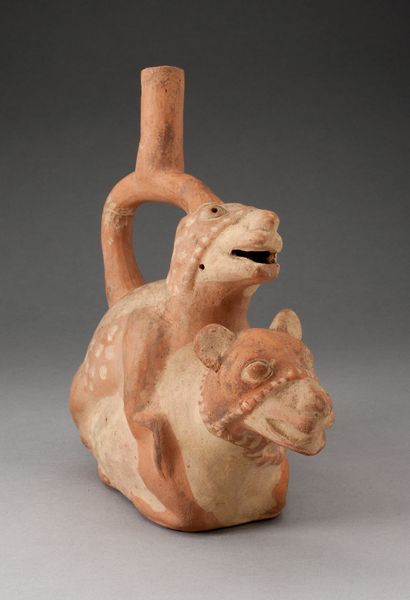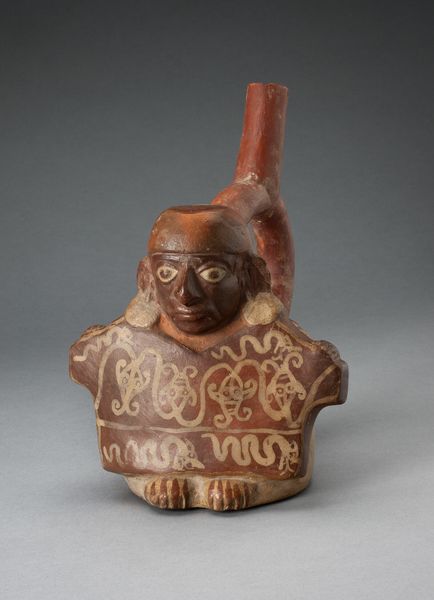
ceramic, terracotta
#
ceramic
#
figuration
#
form
#
terracotta
#
indigenous-americas
Dimensions: H. 22.2 cm (8 3/4 in.)
Copyright: Public Domain
Curator: This remarkable ceramic piece, crafted by the Moche people between 100 and 500 AD, is a stirrup spout vessel shaped like a feline. Editor: Intriguing! My immediate impression is one of serene composure, perhaps even a hint of knowingness in its closed eyes. It's surprisingly tactile—I want to reach out and feel the smoothness of the clay. Curator: Precisely! The vessel's form follows its function, of course. The stirrup spout, a characteristic Moche innovation, allowed for liquid to be poured without spilling, crucial in a ritual context. What strikes me is the careful manipulation of form – the simplified curves of the body contrasted with the more detailed facial features. Editor: I'm curious about the reddish-brown pigment. Is it solely decorative, or does it bear some symbolic significance relating to Moche cosmology? Is the selection and placement significant? Curator: Moche ceramics, particularly vessels, often served as powerful socio-political statements. It's probable that the feline form represents a powerful animal associated with shamanic practices, such as jaguars, reinforcing the elite's authority. Editor: So, it’s a portrait, but more than that. By invoking a sacred animal the ruler connects himself to cosmic power. I wonder, how did this fit into larger power structures of the time? Where and how would this object have been viewed or used? Was its creation a collective endeavor, and how might its creation impacted its valuation? Curator: Context is everything, naturally. As you said, while its functionality is clear, its true impact lies in understanding the societal role such objects played within Moche governance and belief systems. In essence, this seemingly simple vessel is a potent emblem of power. I see also how form lends meaning to cultural narratives. Editor: So well put. What appears to be a docile portrait masks an object deeply entangled with social stature and belief. These objects become precious for their entanglement, yes? Curator: Precisely. In the clay and form, history takes shape, and, simultaneously, shapes our histories.
Comments
No comments
Be the first to comment and join the conversation on the ultimate creative platform.
